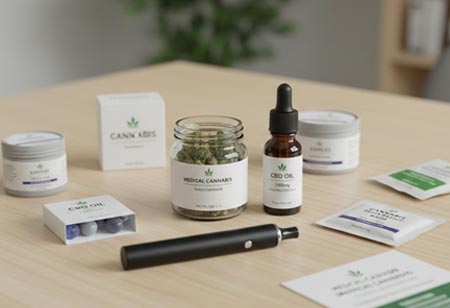Thank you for Subscribing to Cannabis Business Insights Weekly Brief
The Growing Emergence of Cannabis Marketing in 2023
From wellness-focused messaging to celebrity endorsements, industry experts describe the marketing trends that will shape the future of cannabis.

By
Cannabis Business Insights | Tuesday, January 31, 2023
Stay ahead of the industry with exclusive feature stories on the top companies, expert insights and the latest news delivered straight to your inbox. Subscribe today.
From wellness-focused messaging to celebrity endorsements, industry experts describe the marketing trends that will shape the future of cannabis.
FREMONT, CA: Increasing legalization rates worldwide are spawning a boom in the cannabis industry. An increase in legal cannabis sales from the last year, $17.8 billion, to the year 2030 will push the market's total worth to over $30 billion.
As category participants have more market prospects, they invest more in advertising and marketing to overcome stigmas, increase brand awareness, and increase sales.
At Advertising Week in New York, cannabis industry experts discussed how they handle the problems and potential of modern marketing.
Here are some tendencies that they identified:
Weed Marketing meets entertainment
Brands in the cannabis and hemp industry frequently have to deal with stringent platform rules and the regulatory and compliance hurdles inherent in selling these products. Spaces like Facebook and Instagram, which may help businesses effectively reach target audiences, are hostile to the sector. Due to these and other obstacles, many cannabis firms find value in partnering with celebrities and shifting their focus to the entertainment and music industries.
For instance, last year, Weedmaps, an app that helps users identify nearby shops and delivery alternatives in places where cannabis is legal, approached Wheelhouse Labs, an agency-like entertainment firm co-founded by Jimmy Kimmel.
Delicious product innovation overturns stigmas.
Brands of hemp and cannabis are expanding their consumer base by investing in product innovation and extending beyond the flower.
Approximately 80 percent of all product sales were attributable to floral a decade ago; today, that figure is 47 percent. Consumers are becoming interested in edibles, infused products, and other cannabis-manufactured products.
This transformation, according to Lynch, is helping to de-stigmatize the industry and enabling brands in the space to establish greater consumer trust. The industry has benefited from the introduction of items that are more familiar and a little less intimidating. For instance, when Curaleaf released a cannabis-infused seltzer in Massachusetts, fifty percent of product sales were from cannabis novices.
Outdoor advertisements have both opportunities and challenges
Although out-of-home (OOH) advertising is a more traditional channel, cannabis companies continue to invest in billboards and signage.
For this market, OOH advertising is one of the few things brands know they can do. It's outdated, but it's an essential element of this category because it's one of the only channels [companies] can invest in without worrying about people removing their advertisements or questioning them.
"Cannabis this way" billboards are frequently the most effective.
While OOH advertising consumes a significant percentage of cannabis marketing dollars, the medium has limitations. Performance measurement is of paramount importance. Curaleaf's methods for monitoring the effectiveness of OOH advertising are "quite conventional," consisting primarily of lead source tracking via the company's website. Visitors to the Curaleaf website are asked how they heard about the brand; they may indicate that they saw OOH activations.
Check Out This: Manage Marketing






